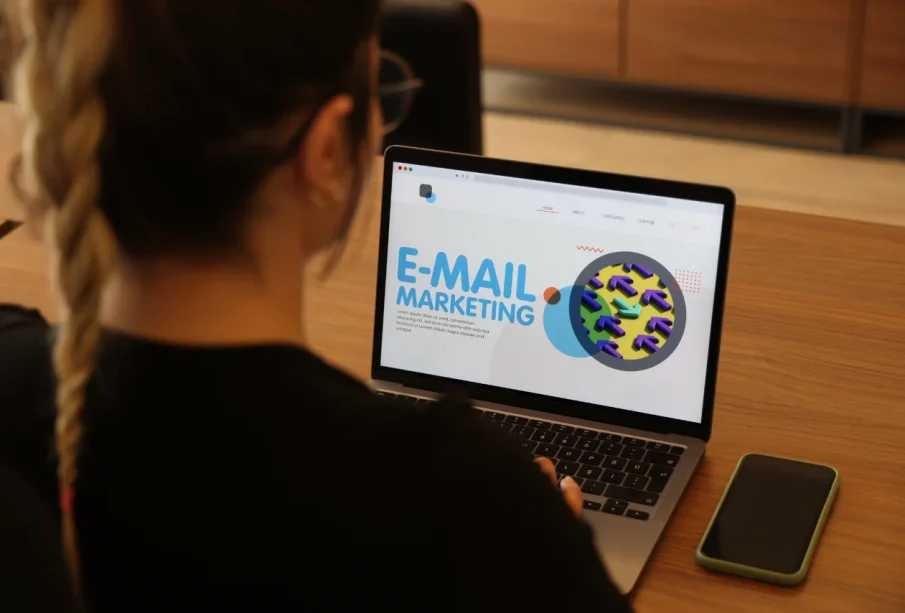
Email marketing has long been regarded as one of the most effective and reliable tools for driving business growth. With the ability to directly communicate with potential customers and engage with existing ones, email campaigns offer a powerful means of promoting products, sharing updates, and fostering long-term relationships. However, in today’s highly competitive digital landscape, simply sending out emails is not enough. To truly succeed, marketers need to employ well-thought-out strategies that maximize engagement, build trust, and ultimately drive conversions.
In this article, we’ll explore the best practices for email marketing that work—strategies that not only capture attention but also build meaningful connections with recipients, ensuring that email campaigns continue to generate results.
1. Build and Segment a Quality Email List
One of the foundational elements of successful email marketing is the quality of your email list. It’s easy to get caught up in the excitement of a large email list, but quantity doesn’t always equate to quality. An email list made up of engaged, interested individuals is far more valuable than a list filled with unqualified contacts. It’s crucial to build your list organically and maintain it regularly by removing inactive subscribers.
Segmentation is also essential to ensure that your messages are tailored to the specific needs and preferences of different audience groups. By dividing your email list based on factors like location, purchase history, or engagement level, you can send more targeted and relevant content. For instance, a customer who has previously purchased running shoes may be interested in receiving emails about new athletic gear, while someone who has just signed up for your newsletter may appreciate more general information about your brand.
Best Practice Tip: Regularly clean your email list to remove inactive subscribers and segment your audience based on behaviors, demographics, and interests. This will help ensure that each email sent is relevant and valuable to the recipient, increasing the likelihood of engagement.
2. Craft Compelling Subject Lines
The subject line is the first thing a recipient sees when an email lands in their inbox, and it’s the deciding factor in whether they’ll open the message or ignore it. With a sea of emails competing for attention, a well-crafted subject line is absolutely crucial. It needs to be concise, clear, and intriguing enough to prompt the recipient to click.
Effective subject lines can be the difference between a high open rate and an email lost in the void. Whether you’re offering a limited-time discount, sharing valuable insights, or promoting an exciting product launch, your subject line should communicate the value of opening the email without being misleading.
Best Practice Tip: Keep subject lines short and to the point, ideally under 50 characters. Use action-oriented language, personalization, or even curiosity to spark interest. Testing subject lines through A/B testing is a great way to understand what resonates best with your audience.
3. Personalize Your Emails
Personalization is one of the most effective ways to make your email marketing stand out. People want to feel like they are being spoken to individually rather than being treated as just another name on a list. By leveraging customer data such as names, past purchases, or browsing history, you can craft emails that feel more personal and relevant.
Beyond simply inserting the recipient’s name into the greeting, you can use dynamic content to offer product recommendations, personalized offers, or targeted messaging based on previous interactions with your brand. This level of personalization shows that you understand your customers’ needs and increases the chances of conversion.
Best Practice Tip: Use customer data to create dynamic, personalized emails. This can include addressing the recipient by name, recommending products based on previous purchases, or sending offers based on customer behavior or demographics. The more you tailor your content, the more likely recipients will engage.
4. Provide Valuable Content
While email marketing is often used for promotions and offers, it’s important not to overdo it with sales pitches. To build trust and loyalty with your subscribers, you must offer more than just transactional emails. Providing valuable, informative content that helps your audience solve problems or learn something new can position your brand as a trusted resource.
Think about including educational resources like blog posts, how-to guides, or industry insights. You could also share customer success stories, case studies, or behind-the-scenes looks at your business. This content not only helps strengthen your relationship with subscribers, but it also keeps them engaged, increasing the chances they’ll take action on your future campaigns.
Best Practice Tip: Maintain a balance between promotional emails and valuable content. Provide information that your audience finds useful or entertaining, without always pushing for a sale. The more value you provide, the more likely your subscribers will look forward to your emails.
5. Design for Mobile Users
In a world where mobile devices dominate, ensuring that your emails are optimized for mobile viewing is absolutely essential. According to various studies, over 50% of emails are opened on mobile devices, and emails that are not mobile-friendly can result in a significant drop in engagement and conversions.
Emails should be designed with simplicity in mind, with text that is easy to read on smaller screens and images that load quickly. Call-to-action buttons should be large enough to tap on mobile screens, and emails should be responsive, meaning they adjust to fit any screen size.
Best Practice Tip: Test your emails on different devices and screen sizes before sending them out to ensure they are mobile-friendly. Make sure that all images, text, and buttons are optimized for a smooth mobile experience, which will help improve open rates and user engagement.
6. Include Clear and Compelling Call-to-Actions (CTAs)
Every email you send should have a clear and compelling call to action (CTA). Whether you want the recipient to make a purchase, download a resource, or visit your website, your CTA should stand out and tell them exactly what to do next. A CTA that is vague or hidden can lead to confusion and missed opportunities.
The CTA should be action-oriented, concise, and easy to find. It should also align with the content of the email. For example, if you’re offering a discount, the CTA could say, “Shop Now and Save 20%.” Make sure the CTA button is large enough to be clicked easily, especially on mobile devices.
Best Practice Tip: Use actionable, benefit-driven language for your CTAs and make them stand out visually. Position the CTA above the fold (visible without scrolling) or repeat it in the email to increase the likelihood that recipients will take action.
7. Test and Optimize Your Campaigns
Email marketing is not a set-it-and-forget-it strategy. To continuously improve and drive better results, it’s important to regularly test and optimize your campaigns. This can include A/B testing different elements such as subject lines, images, CTAs, or email layouts.
By analyzing key performance indicators (KPIs) like open rates, click-through rates (CTR), conversion rates, and unsubscribe rates, you can identify what’s working and what needs improvement. Regular testing allows you to refine your email marketing strategy over time, helping you get the most out of your campaigns.
Best Practice Tip: Set aside time each month to review your email performance and run A/B tests on different aspects of your campaigns. Use the insights gained from these tests to make data-driven decisions that improve your results over time.
8. Ensure Compliance with Regulations
In recent years, email marketers must be mindful of regulations like the General Data Protection Regulation (GDPR) in the EU and the CAN-SPAM Act in the United States. These regulations aim to protect consumer privacy and ensure transparency in email marketing practices.
Failure to comply with these regulations can result in hefty fines and damage to your brand’s reputation. Always ensure that your email marketing efforts are fully compliant by obtaining proper consent before sending promotional emails and providing clear opt-out options for subscribers.
Best Practice Tip: Familiarize yourself with the laws and regulations governing email marketing in your region. Always obtain explicit consent from subscribers and include an easy-to-find unsubscribe link in every email you send.
Conclusion
Email marketing continues to be one of the most powerful tools for building relationships with customers and driving business growth. By following these best practices—building a quality list, personalizing content, providing value, optimizing for mobile, and testing your campaigns—you can enhance your email marketing efforts and maximize your results. With careful planning and continuous optimization, email marketing can not only nurture your customer base but also increase sales and foster long-term loyalty. In an ever-evolving digital landscape, businesses that adapt and refine their email marketing strategies will remain competitive and continue to grow.
Emerging Tools for Brand Storytelling Explained
April 3, 2025Advanced Strategies for Product Positioning That Work
February 3, 2025Best Practices for Brand Storytelling for Sustainable Growth
January 15, 2025
Comments are closed.
More News
-
Advanced Strategies for GDPR Compliance Used by Top Companies
January 4, 2025 -
Emerging Tools for Business Scalability in 2025
March 10, 2025
Top Posts
Recent Posts
- Key Trends Shaping the Global Business Service Industry October 7, 2025
- How to Build Client Trust in Business Service Relationships October 7, 2025
- Innovative Fitout Solutions for Veterinary Practices of All Sizes August 28, 2025
- The Importance of Professional Removalists for Office Relocations August 20, 2025
- Navigating Vanuatu’s Business Landscape: Essential Tips for Entrepreneurs July 31, 2025
- Precision Cooling Systems That Maximise Data Centre Efficiency June 28, 2025
- Understanding Job Description Writing for Sustainable Growth May 12, 2025
Categories
- Business (10)
- E-commerce & Online Business (5)
- Finance & Accounting (5)
- HR & Hiring (5)
- Industries (5)
- Legal & Compliance (5)
- Management & Growth (5)
- Marketing & Branding (5)
- Technology & Tools (6)
Archives
- October 2025 (2)
- August 2025 (2)
- July 2025 (1)
- June 2025 (1)
- May 2025 (7)
- April 2025 (5)
- March 2025 (9)
- February 2025 (11)
- January 2025 (9)
- December 2024 (1)
- November 2024 (1)
- May 2022 (1)
- November 2021 (1)








